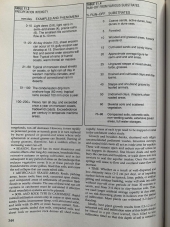posted 11 years ago
Have you looked at Sepp Holzer's "Permaculture" book or Ben Falk's "The Resilient Farm and Homestead"? They seem to deal with some of the issues you are looking to get answers about.
To me, the key thing with water is putting it where it will do the land the most good to get the results you want - and with as little work as possible once it is running. There are always maintenance issues, of course, but that is the life of a steward of the land. Just my opinion there.
A swale can be many things, and I think of them as 'soft ditches' that are short rather than as a unique thing. But the usage defines the product. Roadside swales, yard swales, and ditches/canals all have similar function, but different results. The idea being to stack the function so that one system feeds another, which feeds another and so on. The stacking of function is the base concept to me, and with water, there are a lot of functions that it can have when guided to areas where that function is constructive and additive rather than destructive and subtractive. With the equipment and energy you have, start with a plan of how you want your land to work, interfunctionality-wise, and that will guide you on how you want your water and earthworks to support that plan.
I always look at it from and engineer's viewpoint (it's my nature and my calling), as in what is the source and where is the need. What filtering needs to occur, if any, before the source feeds the need. Look at it from the fecal matter viewpoint. Raw fecal matter generally needs some sort of processing in order to render it pathogenically or chemically less dangerous to the plants you want to use it to feed. This generally means some sort of composting/time in order for things to break down into suitable use. Composting, to me, is basically using other organic matter to "dilute" the intensity of what the fecal matter contains. The amount of time depends upon the initial energy intensity (chemical or pathogen) and what is needed to get it to usable levels. Water has a similar paradigm associated with it, not only energy intensity (length and size of run), but also its ability to be conserved for a usable amount of time and in the location that is best for storing it.
Many folks consider that last part to mean ponds and such, what I am picking up here though, is that hugelkultur is the better reservoir/filter medium. It conserves the moisture in the place where the plants need it over time, and keep it available over time. Hugelmounds also have other functions that they stack in, pulling food sources out of the frost pool to give them more grow time, warmer microclimate, and so on. Some on ground storage (ponds and such) is needed to water critters of course, but a lot of moisture is also gotten from quality, fresh feed.
Anyway, I go back to make your plan, figure out what water and earthworks will support that plan and then do it. A general plan is a good start and having something in place and running is better than not. If you don't like the way it is working, or it isn't meeting the parameters of your design then change it. But also remember that many permaculture works require more than one season to truly get going. Take the extra factors (like N or nitrogen fixing) into account. Five acres is a pretty good sized playground, and having the equipment to put your plan into play is a good thing.
Did I manage to answer any part of your question? I 'talk' a lot, so I hope so.








